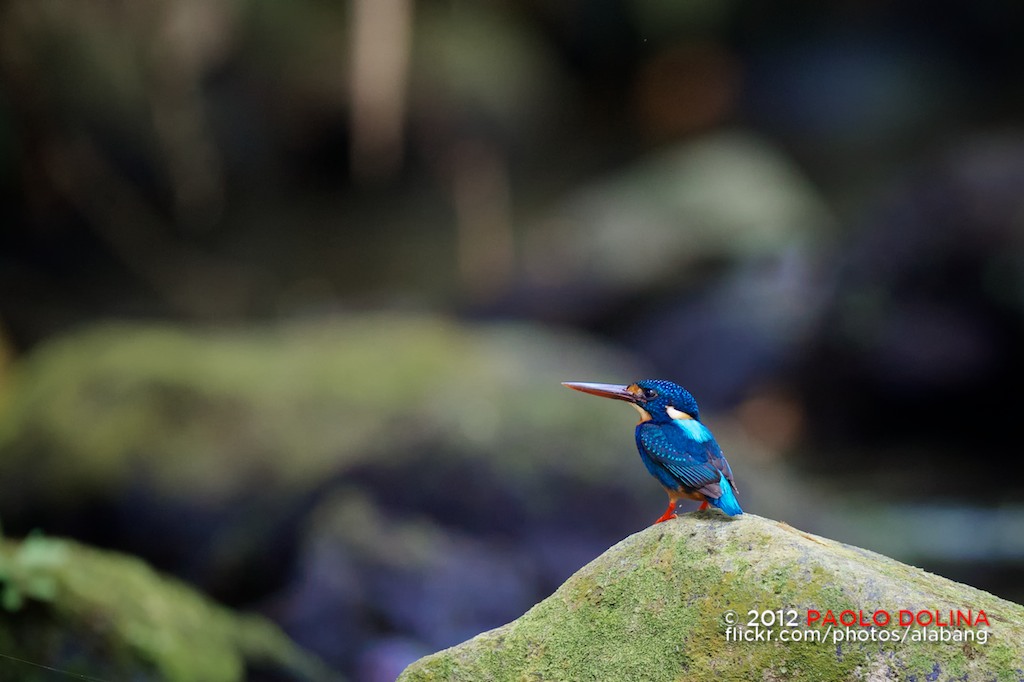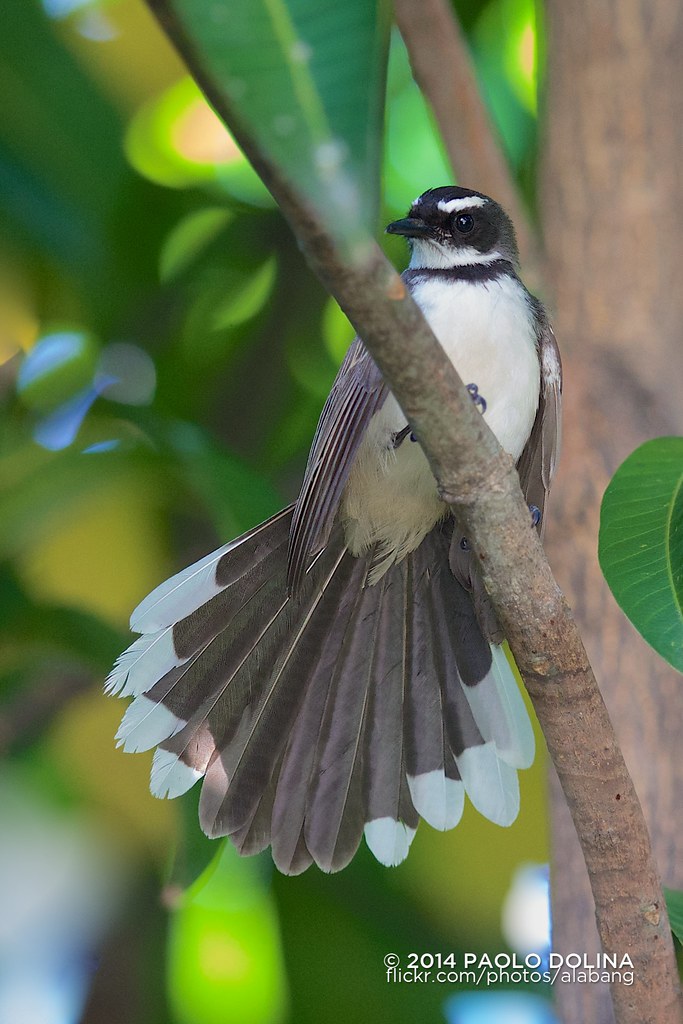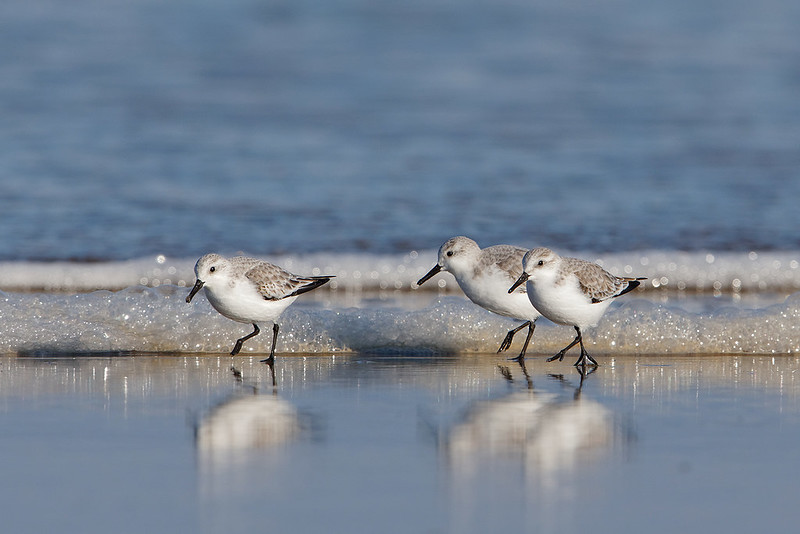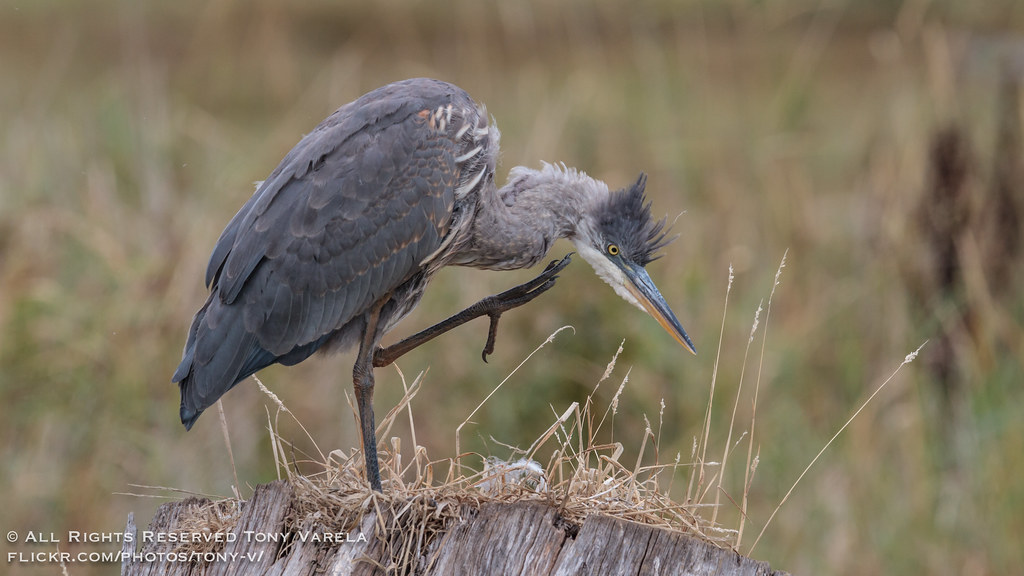Upvote
0
You are using an out of date browser. It may not display this or other websites correctly.
You should upgrade or use an alternative browser.
You should upgrade or use an alternative browser.
Canon EF 600mm f/4L IS II USM
- Thread starter neuroanatomist
- Start date

Indigo-banded Kingfisher (Alcedo cyanopectus) by alabang, on Flickr
The Indigo-banded Kingfisher (Alcedo cyanopectus) is a species of bird in the Alcedinidae family. It is endemic to the Philippines, where it is a generally uncommon but locally common resident of the northern and central islands. There are two subspecies, the nominate race, which occurs on Luzon, Polillo, Mindoro, Sibuyan and Ticao, and A. c. nigriostris, which is found in Panay, Negros and Cebu. It forms a superspecies with the Silvery Kingfisher of the southern Philippines.[1]
The Indigo-banded Kingfisher feeds on fish and aquatic insects. It perches on rocks and overhanging branches and foliage and dives steeply into the water to catch its prey. Once caught, it returns the prey to the perch where it is beaten and swallowed. Little is known about its breeding behaviour, although it is known to nest in tunnels dug into the banks of streams and rivers.[1]
Its natural habitats are subtropical or tropical dry forests and subtropical or tropical mangrove forests.
Source: http://en.wikipedia.org/wiki/Indigo-banded_Kingfisher
Taken at San Pablo City, Philippines
Settings: 1/320 ƒ/4 ISO 5000 600mm
Upvote
0
One of first images taken with my brand new 600mm. Hard part was that the worthless tripod and ballhead was to weak so they could not keep the lens still. I had to use the "timer setting" and set that one to 10sec until shutter was released because of the vibrations of the tripod. The ballhead was also so weak so I had to have the moon outside of the frame and then when the lens kept slowly turning down the picture was taken. =)
I´m really looking forward to receive my package with the new tripod and gimbal head that I ordered but the picture came out ok anyway I think. This is the first time I take a picture of the moon. A lot more fun with a 600mm and a 1,4x converter than my 70-200 so that might be the reason. Haha. 8)

I´m really looking forward to receive my package with the new tripod and gimbal head that I ordered but the picture came out ok anyway I think. This is the first time I take a picture of the moon. A lot more fun with a 600mm and a 1,4x converter than my 70-200 so that might be the reason. Haha. 8)
Attachments
Upvote
0
Morlin,
Tripod Head
http://stores.4gdphoto.com/m-3-6-gimbal-tripod-head/
http://www.bhphotovideo.com/c/product/404536-REG/Wimberley_WH_200_Gimbal_Type_Tripod_Head.html/c/product/#inpage:IN+STOCK
Tripod Legs
(BH says it's good for 500mm only but Gitzo says it's good for 600mm)
http://www.bhphotovideo.com/c/product/846215-REG/Gitzo_GT4542LS_GT4542LS_6x_4_SECTION_SYSTEMATIC.html
(BH says it's good for 600mm only but Gitzo says it's good for 800mm)
http://www.bhphotovideo.com/c/product/846220-REG/Gitzo_GT5542LS_GT5542LS_6x_4_SECTION_SYSTEMATIC.html
Above combination is very pricey but considering the 600mm is about $12,800 and does not include the body and other accessories attached then it becomes commensurate to the purchase.
A lousy tripod leg & head will increase the likelihood of garbage shots and an increase of preventable accidents. It will require extra effort & diligence to keep steady. If you value your time like everyone else then go with this combination. Trust me, you do not want to waste a weekend just because you can save $1000.
Another option to add is a replacement lens foot that affords a lower center of gravity and lighter lens. Just be mindful if the clearance for your fingers will fit your fingers.
http://www.reallyrightstuff.com/s.nl/sc.26/category.3554/.f
http://stores.4gdphoto.com/canon-is-ii/
http://www.naturescapes.net/store/naturescapes.net-clf-456-lens-replacement-foot.html
Tripod Head
http://stores.4gdphoto.com/m-3-6-gimbal-tripod-head/
http://www.bhphotovideo.com/c/product/404536-REG/Wimberley_WH_200_Gimbal_Type_Tripod_Head.html/c/product/#inpage:IN+STOCK
Tripod Legs
(BH says it's good for 500mm only but Gitzo says it's good for 600mm)
http://www.bhphotovideo.com/c/product/846215-REG/Gitzo_GT4542LS_GT4542LS_6x_4_SECTION_SYSTEMATIC.html
(BH says it's good for 600mm only but Gitzo says it's good for 800mm)
http://www.bhphotovideo.com/c/product/846220-REG/Gitzo_GT5542LS_GT5542LS_6x_4_SECTION_SYSTEMATIC.html
Above combination is very pricey but considering the 600mm is about $12,800 and does not include the body and other accessories attached then it becomes commensurate to the purchase.
A lousy tripod leg & head will increase the likelihood of garbage shots and an increase of preventable accidents. It will require extra effort & diligence to keep steady. If you value your time like everyone else then go with this combination. Trust me, you do not want to waste a weekend just because you can save $1000.
Another option to add is a replacement lens foot that affords a lower center of gravity and lighter lens. Just be mindful if the clearance for your fingers will fit your fingers.
http://www.reallyrightstuff.com/s.nl/sc.26/category.3554/.f
http://stores.4gdphoto.com/canon-is-ii/
http://www.naturescapes.net/store/naturescapes.net-clf-456-lens-replacement-foot.html
Upvote
0
dolina said:Morlin,
Tripod Head
http://stores.4gdphoto.com/m-3-6-gimbal-tripod-head/
http://www.bhphotovideo.com/c/product/404536-REG/Wimberley_WH_200_Gimbal_Type_Tripod_Head.html/c/product/#inpage:IN+STOCK
Tripod Legs
(BH says it's good for 500mm only but Gitzo says it's good for 600mm)
http://www.bhphotovideo.com/c/product/846215-REG/Gitzo_GT4542LS_GT4542LS_6x_4_SECTION_SYSTEMATIC.html
(BH says it's good for 600mm only but Gitzo says it's good for 800mm)
http://www.bhphotovideo.com/c/product/846220-REG/Gitzo_GT5542LS_GT5542LS_6x_4_SECTION_SYSTEMATIC.html
Above combination is very pricey but considering the 600mm is about $12,800 and does not include the body and other accessories attached then it becomes commensurate to the purchase.
A lousy tripod leg & head will increase the likelihood of garbage shots and an increase of preventable accidents. It will require extra effort & diligence to keep steady. If you value your time like everyone else then go with this combination. Trust me, you do not want to waste a weekend just because you can save $1000.
Another option to add is a replacement lens foot that affords a lower center of gravity and lighter lens. Just be mindful if the clearance for your fingers will fit your fingers.
http://www.reallyrightstuff.com/s.nl/sc.26/category.3554/.f
http://stores.4gdphoto.com/canon-is-ii/
http://www.naturescapes.net/store/naturescapes.net-clf-456-lens-replacement-foot.html
Thank you for your detailed list of gear and your advices.
When I ordered my 600mm the search for good gear to use with it had started and today I hope the tripod and the other stuff will be delivered that I ordered. I have started some threads here asking for advice and I bought the gear that seems to be the best. I know that a Gitzo of the 5000-series might have been even more sturdy but somewhere I need to draw the line between weight/size and how sturdy the tripod is.
I have bought a RRS TVC-34L tripod, Wimberley gimbal head, RRS replacement foot and some camouflage gear from LensCoat for both the tripod, gimbal head and lens. As soon as my next paycheck arrives on my account I will also buy a RRS leveling base.
I have never even seen a RRS tripod in reality so I hope that it is as good as it says. They are expensive but I wanted the best when I bought a lens that expensive. I want a setup that is a joy to use otherwise the lens will stay at home too many times and I will loose interest for it even though it´s a good lens.
Regards / Johan
Upvote
0

Philippine Bulbul (Hypsipetes philippinus) by 500px.com/dolina, on Flickr
The Philippine Bulbul (Hypsipetes philippinus) is a songbird species in the bulbul family (Pycnonotidae). It is often placed in the genus Ixos, but is better retained in Hypsipetes as long as this is not entirely merged into Ixos, as it is quite closely related to the type species of Hypsipetes, the Black Bulbul (H. leucocephalus).[2] It is endemic to the Philippines. Its natural habitats are subtropical or tropical moist lowland forests and subtropical or tropical moist montane forests; on Mount Kitanglad on Mindanao for example it is abundant in any kind of primary forest at least between 500 and 2,250 m ASL.[3] Both the Mindoro Bulbul and the Visayan Bulbul were formerly considered subspecies. Fledglings of the Philippine Bulbul were recorded on Mindanao in late April, but the breeding season seems to be prolonged as females with ripe ovarian follicles were still found in April and May. Territorial songs are heard at lower altitudes as late as May, while further upslope the birds are silent at that time of year and presumably engaged in breeding activity. The Besra (Accipiter virgatus) has been recorded as a predator of young Philippine Bulbuls, and this or other goshawks might also catch adult birds.
Source: http://en.wikipedia.org/wiki/Philippine_Bulbul
Location: http://en.wikipedia.org/wiki/Villa_Escudero_Plantations
ƒ/9.0
1200.0 mm
1/40
12800
No flash
Shutter speed priority AE
Upvote
0
Took some images of the eclipse we had a few days ago with my 600. They turned out pretty great, if I may say so myself. 
Orion Atlas GEM
Canon EOS 7D
Canon EF 600mm f/4 L II
BackyardEOS (For image sequence acquisition)
ISO 100 @ f/8, shutter speeds from 1/250th to 15s.
Orion Atlas GEM
Canon EOS 7D
Canon EF 600mm f/4 L II
BackyardEOS (For image sequence acquisition)
ISO 100 @ f/8, shutter speeds from 1/250th to 15s.
Attachments
Upvote
0
jrista said:Took some images of the eclipse we had a few days ago with my 600. They turned out pretty great, if I may say so myself.
Orion Atlas GEM
Canon EOS 7D
Canon EF 600mm f/4 L II
BackyardEOS (For image sequence acquisition)
ISO 100 @ f/8, shutter speeds from 1/250th to 15s.
Those are stunning! Beautiful.
Thanks for sharing them here on the forum.
Well done.
Upvote
0
Excellent work! Thanks for sharing!jrista said:Took some images of the eclipse we had a few days ago with my 600. They turned out pretty great, if I may say so myself.
Orion Atlas GEM
Canon EOS 7D
Canon EF 600mm f/4 L II
BackyardEOS (For image sequence acquisition)
ISO 100 @ f/8, shutter speeds from 1/250th to 15s.
Upvote
0
jrista said:Took some images of the eclipse we had a few days ago with my 600. They turned out pretty great, if I may say so myself.
Orion Atlas GEM
Canon EOS 7D
Canon EF 600mm f/4 L II
BackyardEOS (For image sequence acquisition)
ISO 100 @ f/8, shutter speeds from 1/250th to 15s.
Awesome. Well done.
Upvote
0
jrista said:Took some images of the eclipse we had a few days ago with my 600. They turned out pretty great, if I may say so myself.
Orion Atlas GEM
Canon EOS 7D
Canon EF 600mm f/4 L II
BackyardEOS (For image sequence acquisition)
ISO 100 @ f/8, shutter speeds from 1/250th to 15s.
Simply amazing!
Upvote
0
Amazing photos. Congratulations!jrista said:Took some images of the eclipse we had a few days ago with my 600. They turned out pretty great, if I may say so myself.
Orion Atlas GEM
Canon EOS 7D
Canon EF 600mm f/4 L II
BackyardEOS (For image sequence acquisition)
ISO 100 @ f/8, shutter speeds from 1/250th to 15s.
And a little cheating I might say. The Atlas GEM helped in low shutter speeds - this is not the cheating I am talking about
(Many
Upvote
0
tron said:Amazing photos. Congratulations!jrista said:Took some images of the eclipse we had a few days ago with my 600. They turned out pretty great, if I may say so myself.
Orion Atlas GEM
Canon EOS 7D
Canon EF 600mm f/4 L II
BackyardEOS (For image sequence acquisition)
ISO 100 @ f/8, shutter speeds from 1/250th to 15s.
And a little cheating I might say. The Atlas GEM helped in low shutter speeds - this is not the cheating I am talking about- and the eclipse was visible from US - this is the cheating I was talking about ;D ;D ;D.
(Many
or even

for me!)
There are three more total eclipses coming. This was the first of the current tetrad, so there is one in October, and another in spring and late fall next year. The latter two are supposed to be more visible from other parts of the globe. I'll only get to see them at sunrise or sunset (which might in and of itself make for an interesting wide angle progression.)
Upvote
0

Philippine Pied Fantail (Rhipidura nigritorquis) by alabang, on Flickr
Settings: 1/800 f/4.5 600mm ISO 6400
Upvote
0
Upvote
0
Upvote
0
Morlin said:A nice morning.
Lovely. Nicely done.
Upvote
0
Morlin said:A nice morning.
Cool. Ruff?
Upvote
0
Similar threads
- Contains 1 staff post(s)
- Replies
- 110
- Views
- 17K
- Replies
- 185
- Views
- 29K







